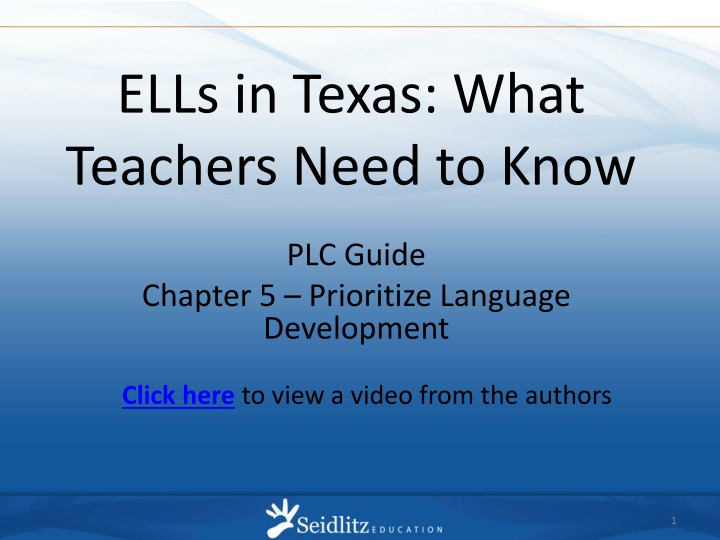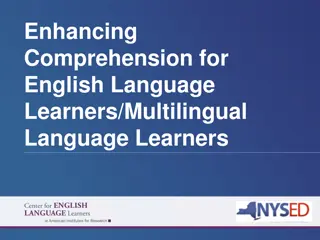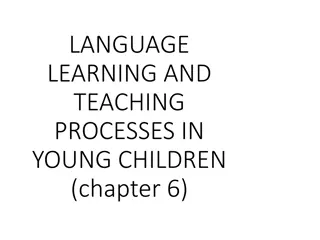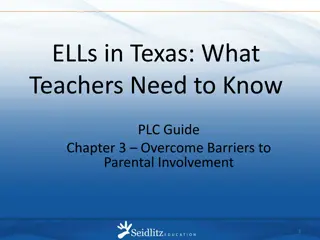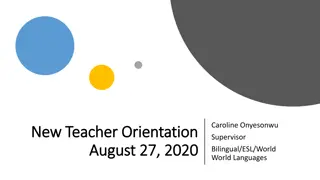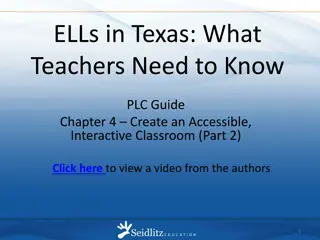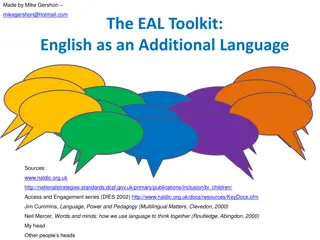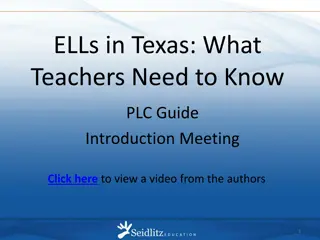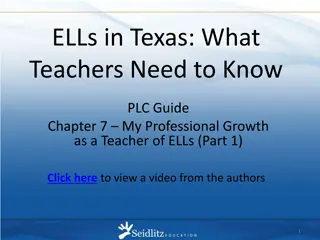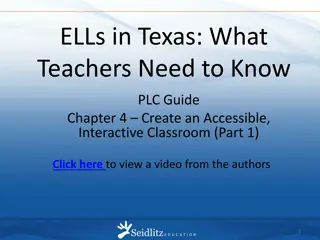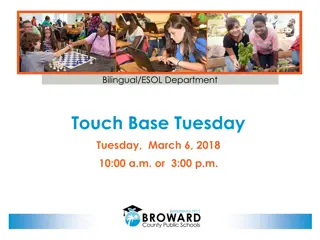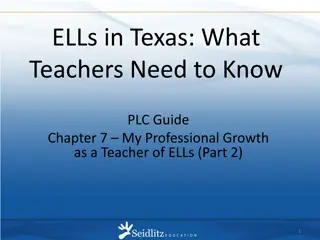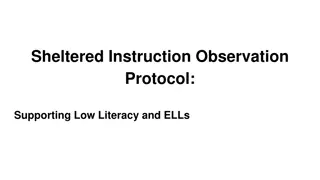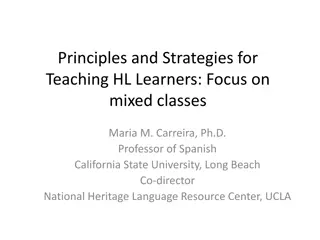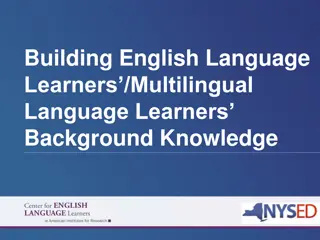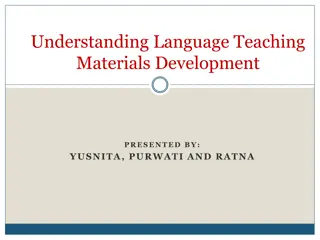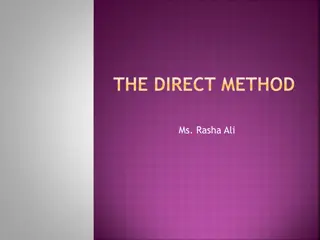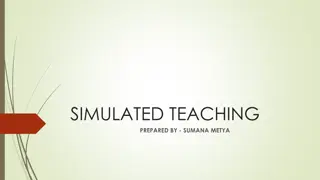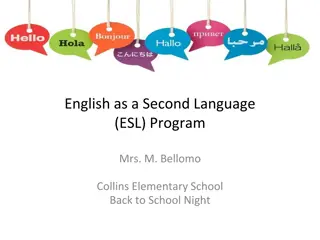Strategies for Language Development in Teaching ELLs
Explore a comprehensive guide for teachers working with ELLs in Texas, focusing on prioritizing language development, setting objectives, improving reading and writing skills, and increasing student interaction. Engage in discussions, readings, lesson planning, and practical activities to enhance ELLs' language proficiency and academic success.
Download Presentation

Please find below an Image/Link to download the presentation.
The content on the website is provided AS IS for your information and personal use only. It may not be sold, licensed, or shared on other websites without obtaining consent from the author.If you encounter any issues during the download, it is possible that the publisher has removed the file from their server.
You are allowed to download the files provided on this website for personal or commercial use, subject to the condition that they are used lawfully. All files are the property of their respective owners.
The content on the website is provided AS IS for your information and personal use only. It may not be sold, licensed, or shared on other websites without obtaining consent from the author.
E N D
Presentation Transcript
ELLs in Texas: What Teachers Need to Know PLC Guide Chapter 5 Prioritize Language Development Click here to view a video from the authors 1 1
Put it on the Table When it is your turn, share your experiences implementing the strategy you selected at the last meeting. What did you notice about the impact of the activity on the quality and quantity of student- to-student interaction? What did you notice about the level of participation on the part of the ELLs you teach? 2 2
Talk 1 Discuss the following three questions: 1. Are we currently writing both content and language objectives for our lessons? 1. If no, should we start? 2. If yes, what might we do to make them more meaningful and useful in formative assessment? 3 3
Read Read pp. 164-167 and pp. 190-192 Pay Attention To: the differences between content and language objectives the relationship between TEKS, ELPS, content objectives, and language objectives the process for improving ELLs reading comprehension the process for improving ELLs writing skills 4 4
Talk 2 With a partner, discuss these two questions: How can I increase opportunities for ELLs I teach to read and understand text? How can I increase opportunities for ELLs I teach to write? 5 5
Write Think of a lesson you will teach next week. Write a few sentences describing what you will have the students read and write during the lesson. Consider, especially what you will do, and the resources you will use, to help ELLs be successful when you have them read and write. 6 6
Make It Real Choose one of the following activities: Argumentative Literacy Frame p. 182 PAT List p. 183 Genre Imitation p. 184 Partner Reading p. 185 Framed Summarization Strategies p. 186 Language Anticipation Guides p. 188 List, Group, Label p. 189 1. Write language and content objectives for the lesson you will teach that includes this activity. 2. Teach the lesson and use the activity. 3. At the next meeting, be ready to share about ELLs involvement/success with the lesson and the activity. 7 7
